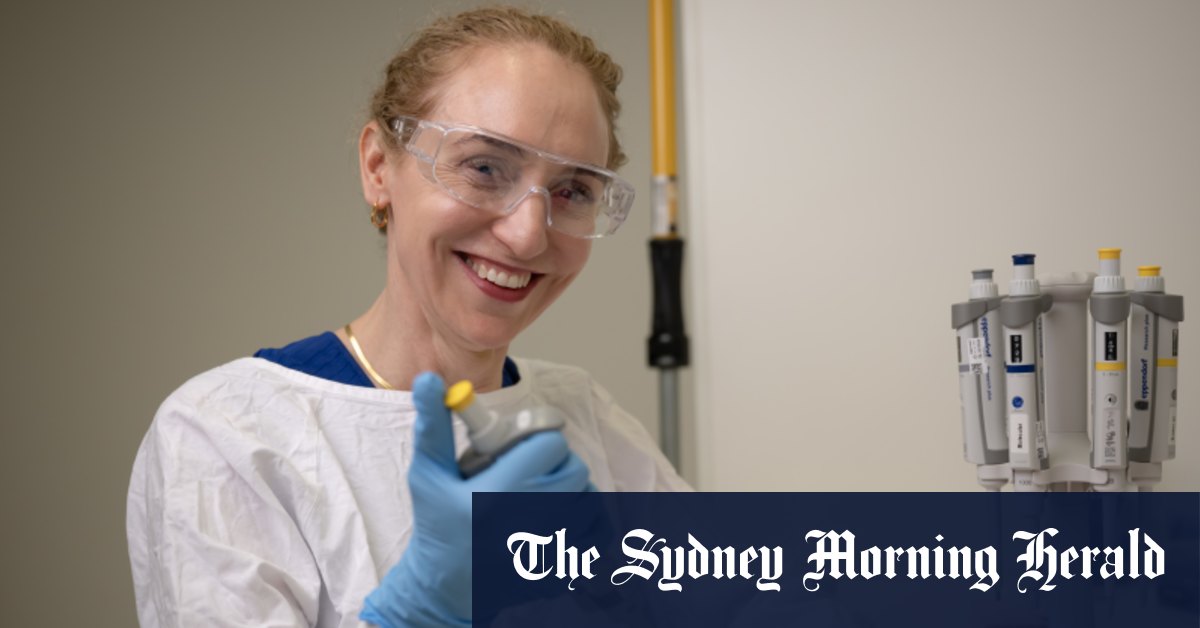Australia
Professor Georgina Long’s immunotherapy study paves way for clinical trial

Breakthrough in Immunotherapy: A Beacon of Hope for Glioblastoma Patients
In a remarkable advancement in the fight against glioblastoma, a recent study has shown promising results in a single patient, offering a glimmer of hope for those battling this aggressive form of brain cancer. While it’s important to note that findings from one case cannot definitively conclude a drug’s effectiveness, researchers are heartened by the outcomes. The patient’s cancer-fighting immune cells demonstrated a notable increase in number, diversity, and activity following immunotherapy. This improvement suggests that the treatment may be stimulating the immune system to target the tumor more effectively. Additionally, the drug’s ability to bind to T-cells within the tumor indicates a significant breakthrough: it successfully crossed the blood-brain barrier, a protective mechanism that often hinders the delivery of therapeutic molecules to the cerebrospinal fluid. This achievement holds profound implications for the development of future treatments, as it paves the way for drugs that can effectively target brain tumors.
The Significance of the Blood-Brain Barrier
The blood-brain barrier is a formidable obstacle in the treatment of brain tumors, as it restricts the passage of many molecules, including potential therapeutic agents. The fact that the drug used in this study successfully navigated this barrier is a monumental step forward. As highlighted by one researcher, "It’s pretty magnificent. These big, fat molecules can actually get into the tumor." This milestone not only advances our understanding of drug delivery mechanisms but also opens new avenues for treating brain cancers, which have historically been challenging to address due to this barrier. The successful penetration of the drug suggests that similar approaches could be explored for other brain tumors, potentially leading to more effective therapies.
The Road Ahead: A Clinical Trial on the Horizon
Building on the success of this individual case, researchers are moving forward with plans to conduct a clinical trial, which could commence within the next year. The trial, spearheaded by Dr. Jim Whittle, a leading Melbourne neuro-oncologist, will focus on newly diagnosed glioblastoma patients. While the details are still being finalized, the study represents a critical step toward determining the broader applicability and efficacy of the treatment. Dr. Whittle emphasizes that while the developments are exciting, the trial will not be suitable for all glioblastoma patients. This cautious optimism reflects the scientific community’s commitment to ensuring that treatments are both effective and safe for those who need them most. The urgency of this research is palpable, as glioblastoma patients and their families await new treatment options that could extend survival and improve quality of life.
A Waiting Game for Patients: The Reality of Glioblastoma
For patients diagnosed with glioblastoma, time is of the essence. The average survival time following diagnosis is 12 to 18 months, with only one in four patients surviving more than a year and fewer than 5% surviving beyond three years. This stark reality underscores the urgent need for innovative treatments. One such patient, Dr. Charlie Scolyer, has been sharing his journey publicly through social media. A recent update from Scolyer revealed that his latest scans showed some changes, which could be indicative of either the effects of his previous treatment or the recurrence of the tumor. This uncertainty highlights the emotional rollercoaster that patients and their families endure as they navigate the challenges of this devastating disease.
The Scientific Community’s Caution: Balancing Hope with Realism
While the results of the single-patient study are promising, it’s crucial to maintain a balanced perspective. The scientific community remains cautious, recognizing that one case does not provide conclusive evidence of a treatment’s effectiveness. Larger, more comprehensive studies are essential to validate these findings and establish the treatment’s safety and efficacy for a broader population. Dr. Whittle underscores this point, noting that the trial will not be appropriate for every glioblastoma patient. This measured approach ensures that the science is robust and that patients receive treatments that are tailored to their specific needs. The interplay between hope and realism is vital in maintaining trust and ensuring that the medical community continues to pursue treatments that offer genuine benefits.
A Glimmer of Hope: The Broader Implications
Despite the challenges, the study and the upcoming clinical trial offer a glimmer of hope for glioblastoma patients and their families. The fact that one patient has shown no evidence of recurrence 17 months after treatment, combined with the drug’s ability to cross the blood-brain barrier, is a testament to the tireless efforts of researchers in the field. These developments not only provide a beacon of light for those affected by glioblastoma but also highlight the importance of continued investment in cancer research. As the scientific community moves forward with the clinical trial, patients and families can take comfort in knowing that innovative treatments are being explored, offering the possibility of improved outcomes in the future. The journey is far from over, but the progress made so far is a powerful reminder of the impact of dedicated research and the resilience of the human spirit.
-

 U.K News6 days ago
U.K News6 days agoSerial shoplifters caught stealing thousands from same Tesco over 30 times
-

 World6 days ago
World6 days agoBrit football coach badly hurt in motorbike crash
-

 World6 days ago
World6 days agoTrain hits car after wrong turn at level crossing
-

 United States6 days ago
United States6 days agoDad, two kids and gran killed in tragic boat accident
-

 World6 days ago
World6 days agoGirl, 4, unknowingly gives classmates cocaine






